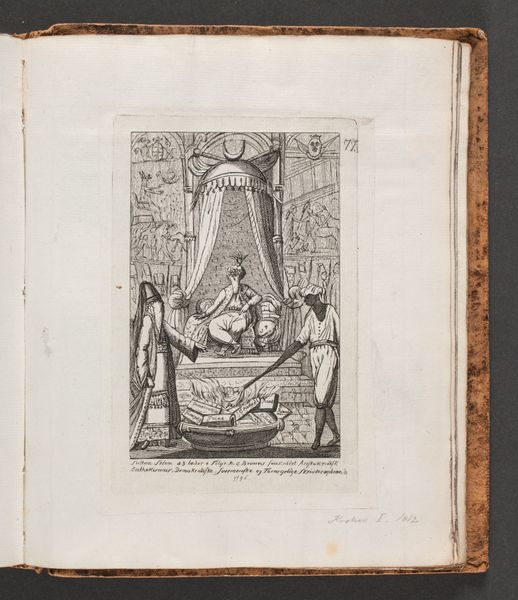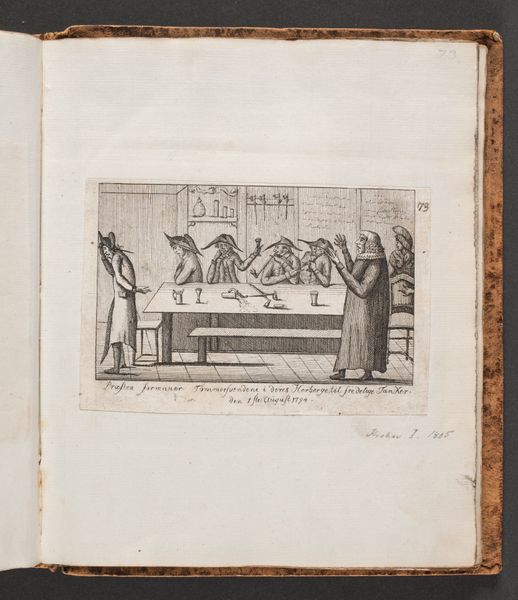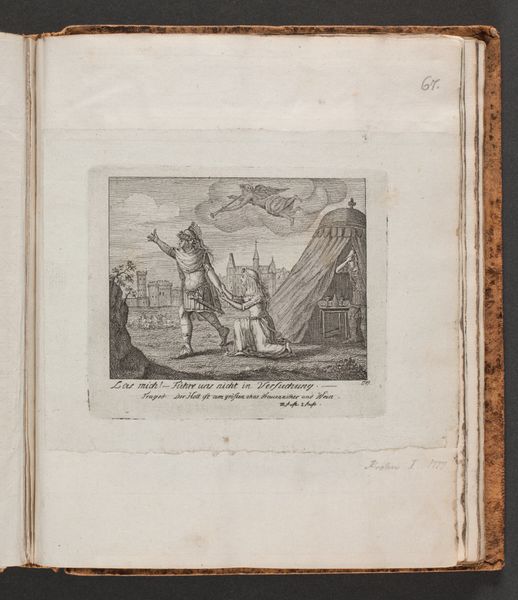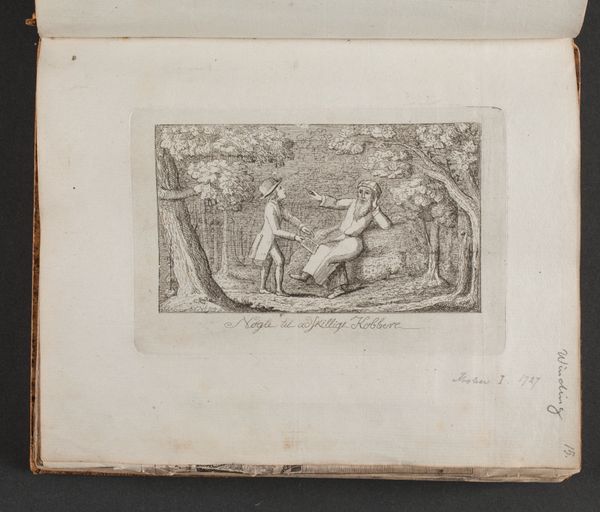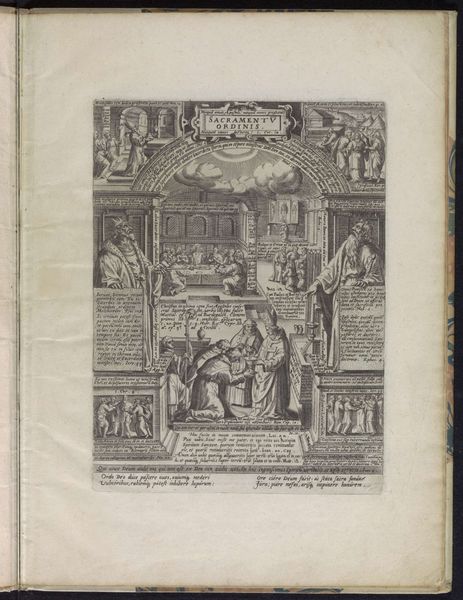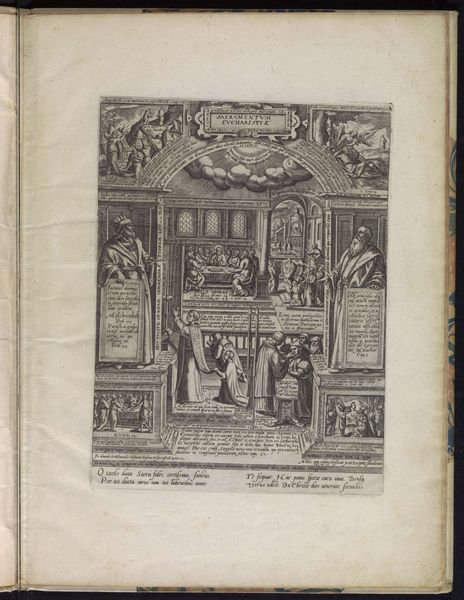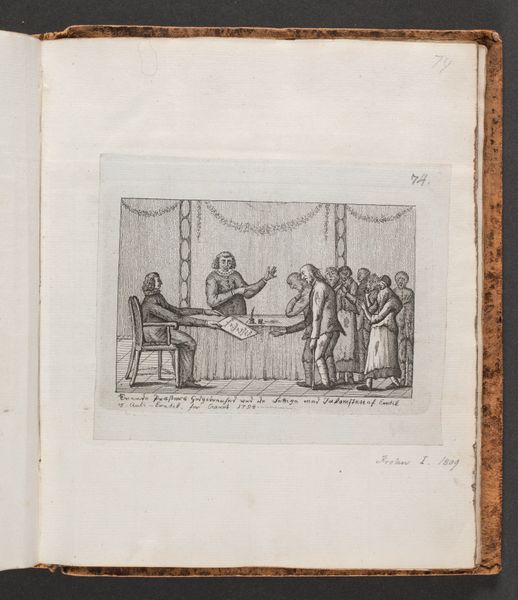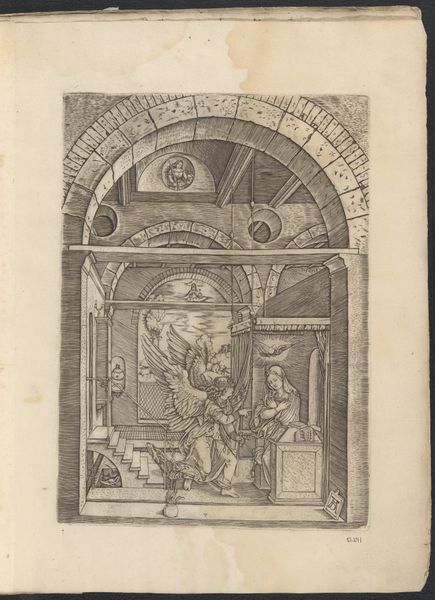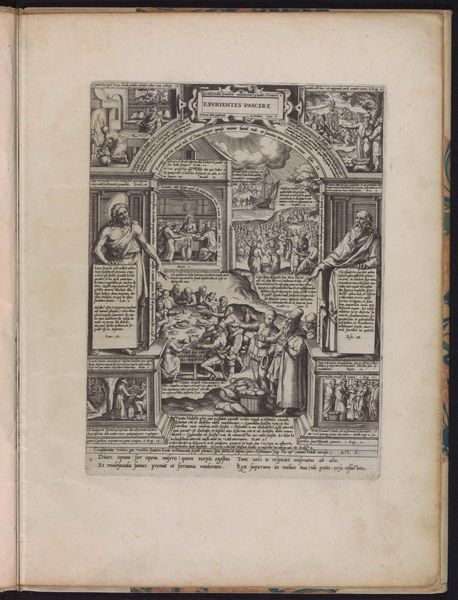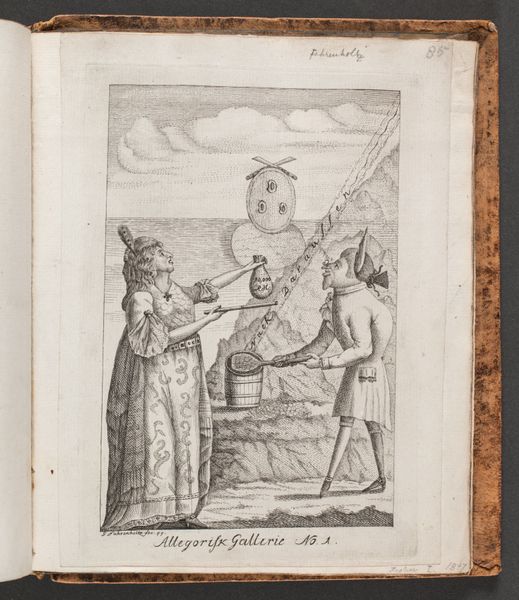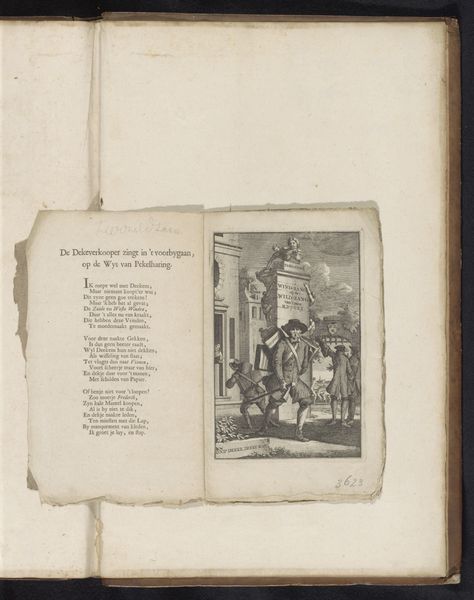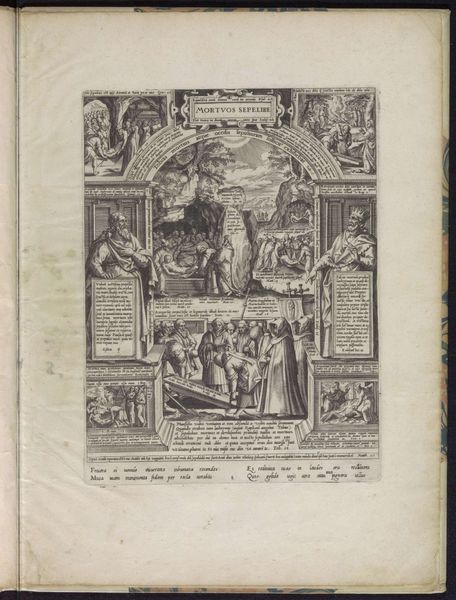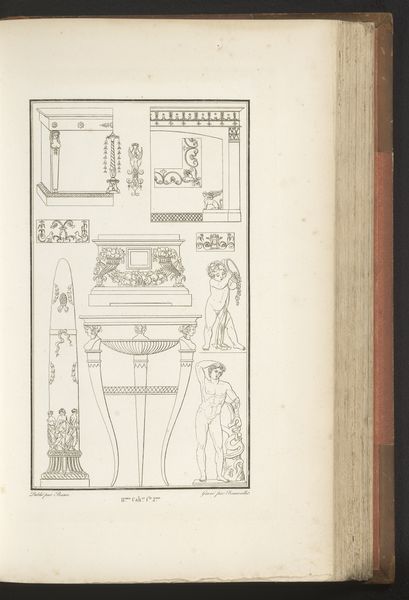
drawing, print, etching, paper, ink
#
portrait
#
drawing
# print
#
etching
#
paper
#
ink
#
islamic-art
Dimensions: 156 mm (height) x 101 mm (width) (plademaal)
Editor: This is an etching, titled "Sultan Selim III...", dating back to 1796. The print utilizes ink on paper, currently housed at the SMK in Copenhagen. There's an undeniable sense of drama in its stark black and white contrasts. What compositional elements stand out to you? Curator: Immediately, the linear precision of the etching commands attention. Notice the strategic deployment of hatching and cross-hatching; these techniques model form and create tonal variations. Do you observe how the artist uses line weight to differentiate foreground from background, thereby constructing a layered spatial depth within a monochrome palette? Editor: Yes, the varying line weights definitely create depth, especially with the figures in the foreground. But what about the architecture in the background? It feels so ornate, almost overwhelming. Curator: Indeed. That density serves to reinforce the Sultan's power. Semiotically, consider the crescent moon atop the canopy – a visual signifier of Islamic authority. The throne itself acts as a frame, drawing focus to the Sultan, emphasizing the visual language of power. Are you also mindful of the negative space? Editor: Now that you mention it, yes. The relative openness surrounding the central grouping allows our eyes to focus on the main subject without feeling too crowded by the details. Curator: Precisely. Moreover, ponder the dynamic tension generated by the positioning of the figures. Each line and form contributes to a calculated orchestration. What affective dimension do you find elicited by this specific combination of compositional features? Editor: I hadn't noticed how deliberately everything was placed. Analyzing the relationships between line, space, and form really clarifies how the artist constructs a visual hierarchy, guiding the viewer's eye. Thanks, I have much more to consider. Curator: Indeed. A sustained engagement with form unveils hidden layers. Now, try looking for other examples of hierarchical forms that achieve such specific expressions of affect and consider how similar formal techniques construct completely different narratives.
Comments
No comments
Be the first to comment and join the conversation on the ultimate creative platform.
